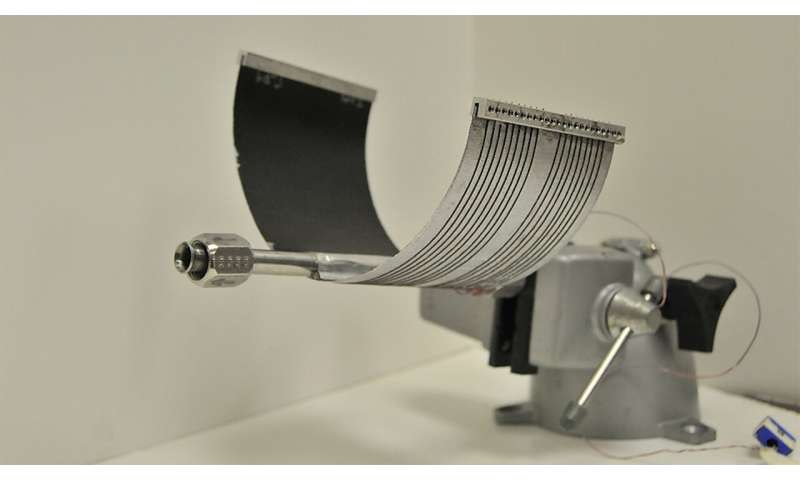Hot or Cold: Adapting to Lunar Extremes

When imagining what it's like to be in outer space, many people think of experiencing zero gravity. An aspect that people may not think about is outer space's extreme temperatures. According to NASA, the average low temperature at the moon's equator is minus 208 F. For comparison, Earth's lowest recorded temperature is minus 128.6 F, registered in July of 1983 at the Vostok weather station in Antarctica.
The moon's equator has a temperature range of minus 208 F to 250 F, an almost 500-degree difference. As lunar exploration and the commercialization of space continue, finding a way to survive these extreme temperatures is a necessity.
Dr. Darren Hartl, associate professor of aerospace engineering at Texas A&M University, has partnered with NASA's Glenn Research Center and Johnson Space Center to design a radiator that can adapt to the moon's wide temperature range.
Much like humans have different wardrobes for summer and winter, current technology requires two different radiators to operate at these differing temperatures.
"The radiator needs to adapt to the moon's thermal situation, much like humans need to adapt to the weather," said Hartl. "You wouldn't wear the same thing to run a marathon in Texas as you would in Antarctica." The moon's extreme temperatures can expose the same exploration system to a wide range of environments.
This collaborative project aims to create a radiator that can morph itself to be compatible with both extreme heat and extreme cold. It is advantageous if the radiator can self-adjust to the temperatures without human input.

The key to the radiator's thermal adaptability is in its design. The radiator is designed to be flexible, which allows it to expand or contract depending on the temperature.
"Similar to how a puppy curls up when it's cold or stretches out in the summer heat, there is a natural tendency to curl up in order to preserve heat, or expand out and reject heat," Hartl said. "If the radiator system itself can do that, you basically have a living radiator."
When the moon's temperature drops, the radiator becomes more compact, allowing it to hold onto the heat. As the moon's temperature rises, the radiator expands, creating more surface area, and allowing excess heat to be released.
Researchers are currently working on two different models of self-morphing radiators. The first utilizes a pump to move heated fluid, similar to a car's air-conditioning system. This model is essentially mission-ready. The second model—which is still in the computational modeling stage—employs a pumpless system to generate heat.
"We are looking at concepts that use a kind of living heat pipe. These heat transfer devices are common in laptop computers, are very simple, and require no pumping energy," Hartl explained. "We want to make them self-adapting and deploy them on the moon."
Hartl notes that the multidisciplinary nature of the project makes it a great fit for Texas A&M. The project requires a combination of expertise in thermodynamics and materials science, as well as aerospace and mechanical engineering. In addition to collaboration with NASA's Glenn Research Center and Johnson Space Center, several Texas A&M graduate and undergraduate students have been a part of this project.
Provided by Texas A&M University College of Engineering